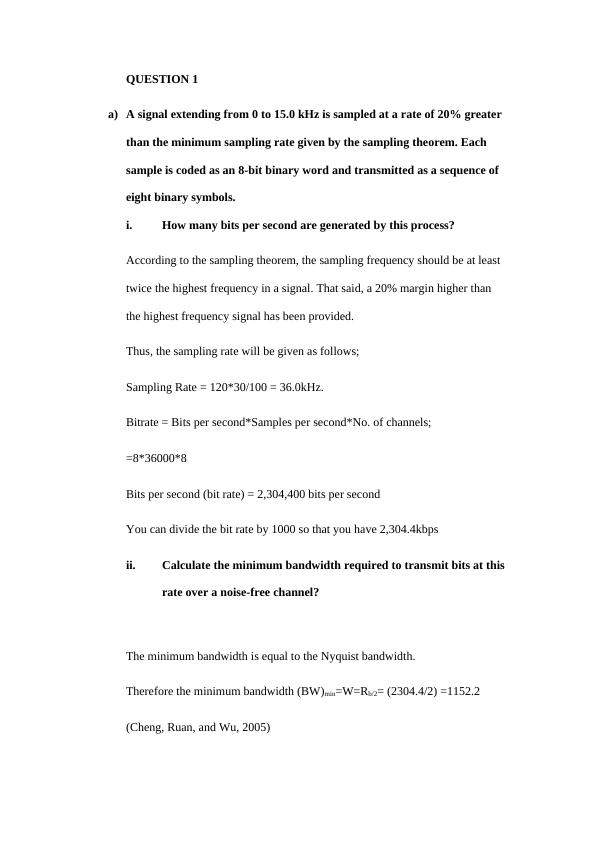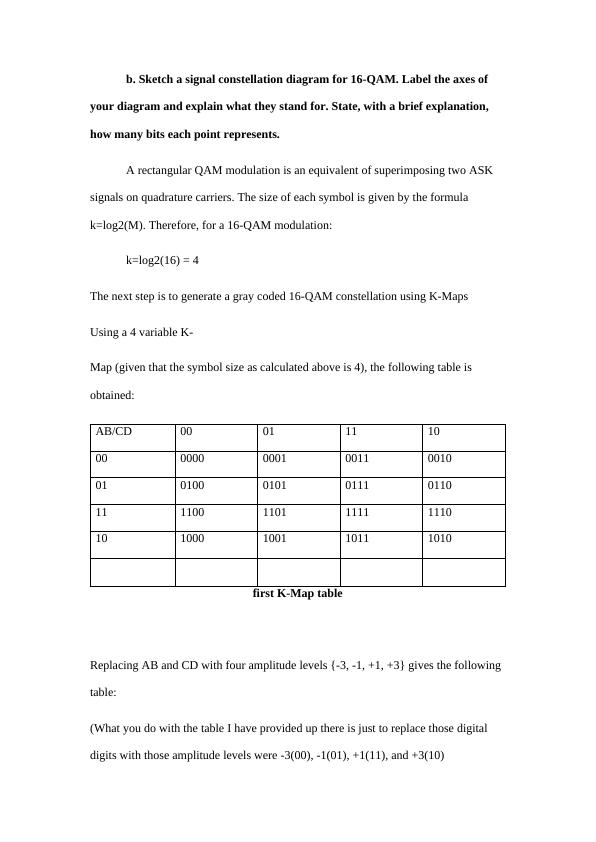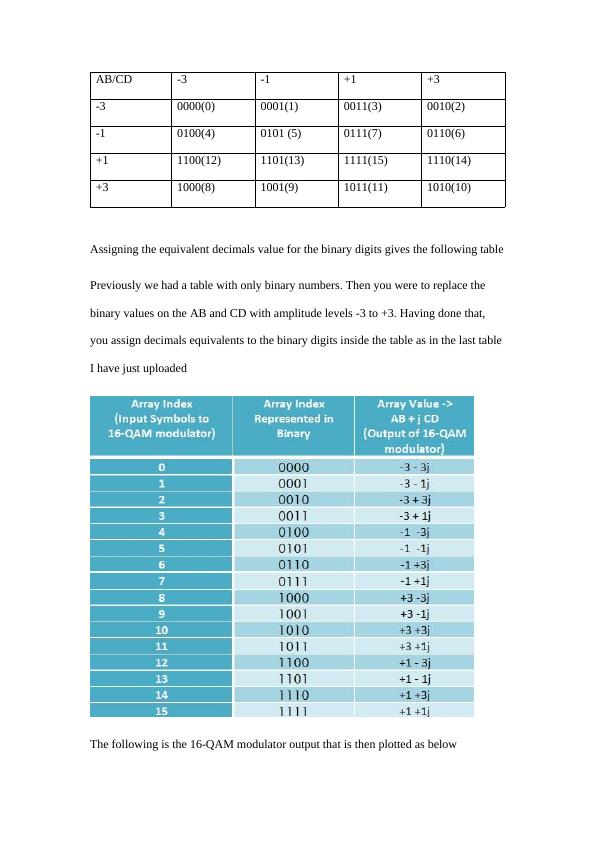Computer Science Assignment .
This is TMA 01 for the TM355 course, which is a tutor-marked assignment that needs to be submitted electronically by 6 December 2018.
17 Pages2507 Words490 Views
Added on 2023-05-28
About This Document
This Computer Science assignment covers topics such as signal sampling, modulation, optical fiber communication, radiofrequency analysis, and more. It includes calculations, diagrams, and explanations of concepts such as Fourier series, ionosphere, and propagation mechanisms.
Computer Science Assignment .
This is TMA 01 for the TM355 course, which is a tutor-marked assignment that needs to be submitted electronically by 6 December 2018.
Added on 2023-05-28
ShareRelated Documents
End of preview
Want to access all the pages? Upload your documents or become a member.
Frequency Modulation
|19
|1193
|110
Wireless Networks and Communication Question 2022
|14
|821
|24
Wireless Communication
|15
|2137
|296
IT Fundamental : Question and answer
|15
|1476
|54
Assignment No 2.
|9
|426
|5
Wireless Network and Communication
|12
|1108
|226




